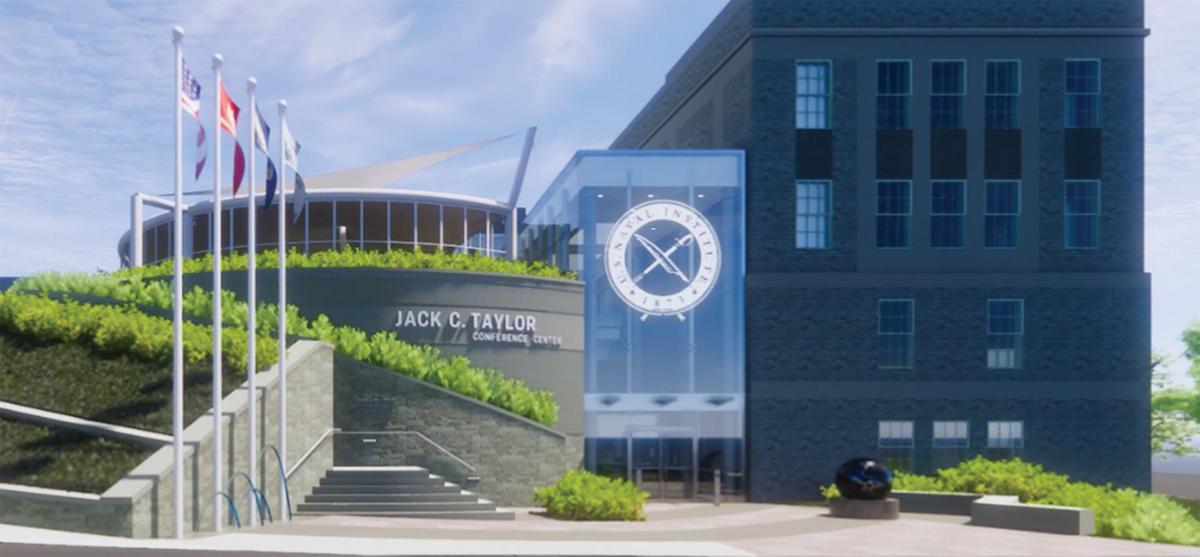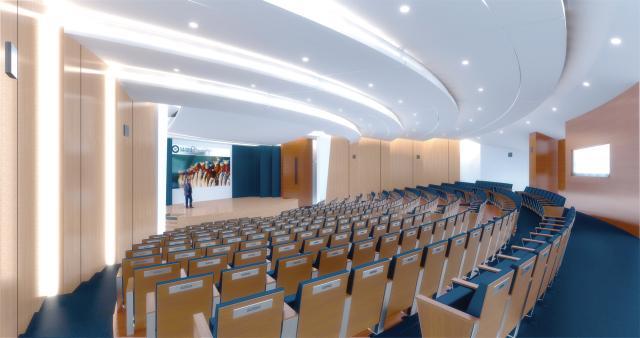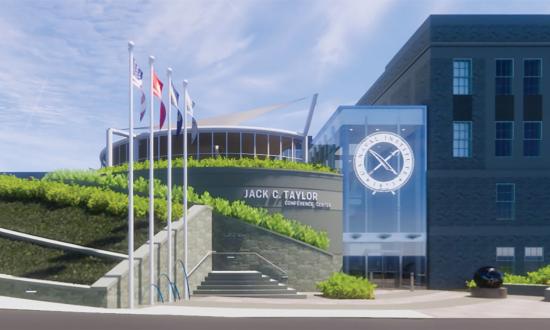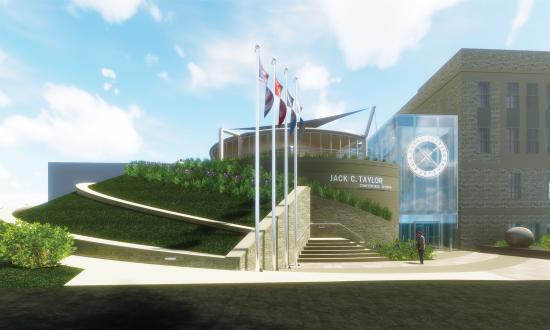It is not too late to become personally involved in the Jack C. Taylor Conference Center by sponsoring an auditorium chair (for a donation of $2,500) and/or a “brick” on the rooftop donor-recognition wall (for a donation of $1,000). You can still sponsor chairs and bricks after the Conference Center is in active use, but to have your personalization in place for the grand opening in late September, we must have your commitment by 31 July.
This is a wonderful chance to memorialize your own service or your family, or to honor someone you admire. Your tax-deductible donation can be made online at www.usni.org/foundation or by contacting the Naval Institute Foundation at foundation@usni.org or (410) 295-1054. If you wish, payment of your gift can be spread over up to three years.
Between the Conference Center and the continuing success of our mission-driven educational programs, this has been a time of growth and positive momentum for the Naval Institute. One gratifying side effect is that Members have been telling us what the Institute means to them. We are honored to share a few of their comments here.
My hope is that the Jack C. Taylor Conference Center will inspire a continuing exchange of ideas that will emerge, be debated, and be refined in that building. After all, not every great idea starts in the Pentagon. When the Naval Institute offered the opportunity to honor or memorialize persons in the Conference Center with its chair and brick program, I found it a fitting way to continue my support of the Institute while also remembering five generations of family members who devoted their life’s work to our Navy.
Proceedings and Naval History have been on my reading list for many years. Naval history is especially interesting and important to me. Now, the Conference Center adds a new dimension to the Institute’s ability to encourage professional discourse, and I’m glad to support it. I see a role for the Conference Center in fostering an awareness and appreciation of the leadership and decisions that built our Navy, won or lost engagements, and influenced global affairs for more than 200 years.
CAPT Stephen C. Nimitz, USN (Ret.)
Member since 1997
I have been a member of the Naval Institute since my commissioning in the U.S. Coast Guard in 1976. Reading Proceedings, I received lessons in seamanship, tactics, strategy, and leadership. I applied what I learned to the utmost of my abilities and, thankfully, experienced a wonderful 20 years of service.
Through Naval Institute Press books, I learned about our sister sea services. That inspired me to enroll in the Marine Corps Command and Staff nonresident program and later the resident program at the Naval War College.
The Jack C. Taylor Conference Center will gather the greatest minds on national security and naval strategy. I appreciate the opportunity to participate through the fundraising campaign.
The Conference Center will play a pivotal part in shaping the national conversation. Ideas will be tested, and forces that shape the world will be set into motion. I am glad to be a small part of it.
CDR Rex M. Takahashi, USCG (Ret.)
Member since 1976
Throughout my career, the U.S. Naval Institute has been a forum for thought- provoking ideas and concepts. On numerous occasions, these have initiated great dialogue with my colleagues and stirred us to be more creative in our thought process, breaking free of the established norms and practices. Therefore, it is incumbent on me to support the Jack C. Taylor Conference Center as another venue to promote critical thinking and the development of those who wish to explore beyond the status quo.
LT(N) Allan MacLauchlan, RCN (Ret.)
Life Member; Member since 1983
My father, Rear Admiral Robert Stetinius Hatcher, was born in the San Francisco Bay area in 1902. His father died in the influenza pandemic of 1917–19, and when his father’s business partners absconded, leaving him and his mother penniless, my father worked as an office boy until his mom discovered that their congressman had Naval Academy appointments available.
Dad graduated second in the Class of 1924. He attended the Naval Postgraduate School and earned a master’s degree at MIT. He took flight training and was designated a naval aviator. In the run-up to World War II, he worked on designs for trainers, transports, and fighters.
After the war, he oversaw development of the Navy’s guided-missile program as commanding officer at Naval Air Station Point Mugu. As carriers evolved to accommodate more powerful aviation, he was designated aeronautical engineering duty only. In that capacity, he worked on the angled deck, the steam catapult, and the mirror landing system. As commanding officer of the Naval Air Development Center in Pennsylvania, he oversaw development of the large-scale centrifuge that would assess human tolerance of G-forces—never before attainable—thus paving the way for human entry into space.
He served for 35 years, retiring in 1955 as Deputy Chief for Research and Development in the Bureau of Aeronautics. In retirement, he spent his happiest years teaching mathematics and physics at Santa Catalina School in Monterey, California. He died in 1985 at age 82.
As the youngest child in a Navy family, I listened at the dinner table to my parents’ stories—how they met at a hop at Annapolis; Daddy’s experiences “coaling ship” as a midshipman (“Comin’ through dirty!”); their life in Pensacola, where, wary of scorpions, they shook out their shoes in the morning. I even met Admiral “Bull” Halsey!
I recall since childhood seeing Proceedings magazine around the house. I was an occasional reader and eventually became a member myself (my sister Cecile Lang, DPA, is a Life Member). I buy books from the Naval Institute Press catalog. In Proceedings and Naval History, I love coming across articles about people and events that evoke such memories. When I heard about the Naval Institute’s new Conference Center and the opportunity it presented to create a permanent memorial, I was all in—I’ve taken a chair and a brick in my father’s name.
Elizabeth R. “Robin” Hatcher, MD
Member since 2010









